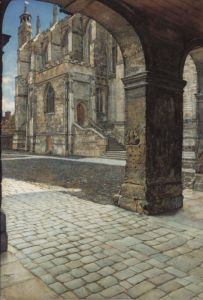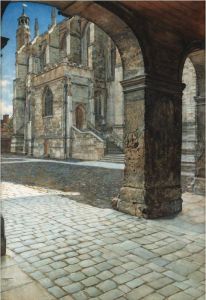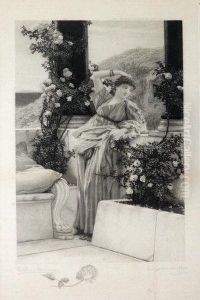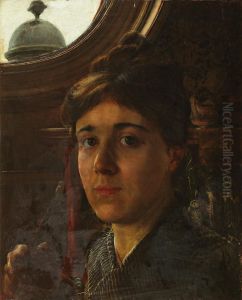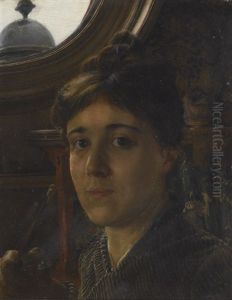Anna Alma-Tadema Paintings
Anna Alma-Tadema was born on August 20, 1865, in London, England, into a family deeply embedded in the artistic milieu of the time. She was the second daughter of the famous Dutch painter Sir Lawrence Alma-Tadema, renowned for his classical subjects, and his first wife, French artist Marie-Pauline Gressin Dumoulin. Growing up in a household that was a hub for artists, scholars, and writers, Anna was immersed in an environment that nurtured her inherent artistic talents from a young age. Her father's influence was particularly significant, instilling in her a meticulous attention to detail and a love for classical antiquity, themes that would appear in her own work.
Anna's artistic education was primarily conducted at home, under the guidance of her father and through interaction with the many artists who visited the Alma-Tadema household. Her early works were often watercolors and drawings, but she later transitioned to oils, the medium in which her father excelled. Anna exhibited her work for the first time at the Royal Academy of Arts in London in 1885, when she was just 20 years old, and she continued to exhibit there regularly throughout her life. Her subjects often included intimate interior scenes and portraits, characterized by a remarkable attention to the detail of textures and patterns. This was a reflection of her interest in the aesthetics of the Aesthetic Movement and the Arts and Crafts Movement, which emphasized beauty in the everyday.
Despite the prominence of her father, Anna Alma-Tadema carved out her own space in the British art world of the late 19th and early 20th centuries. Her works were well received, and she gained recognition for her artistic talent, independently of her father's fame. However, after World War I, her work, like that of many artists of the Victorian era, fell out of popular favor, overshadowed by the emerging modernist movements.
Anna never married and lived most of her life with her family. After the death of her father in 1912, she lived with her stepmother, Laura, and sister, Laurence. Despite the decline in her public profile, she continued to paint and exhibit her work. Anna Alma-Tadema passed away on October 2, 1943, in Wittersham, Kent, England. Her legacy, which had been somewhat overshadowed by the towering figure of her father and the changing tastes of the art world, has been reassessed in recent years, with a renewed appreciation for her contribution to Victorian art and her unique perspective within the Alma-Tadema family's artistic dynasty.

